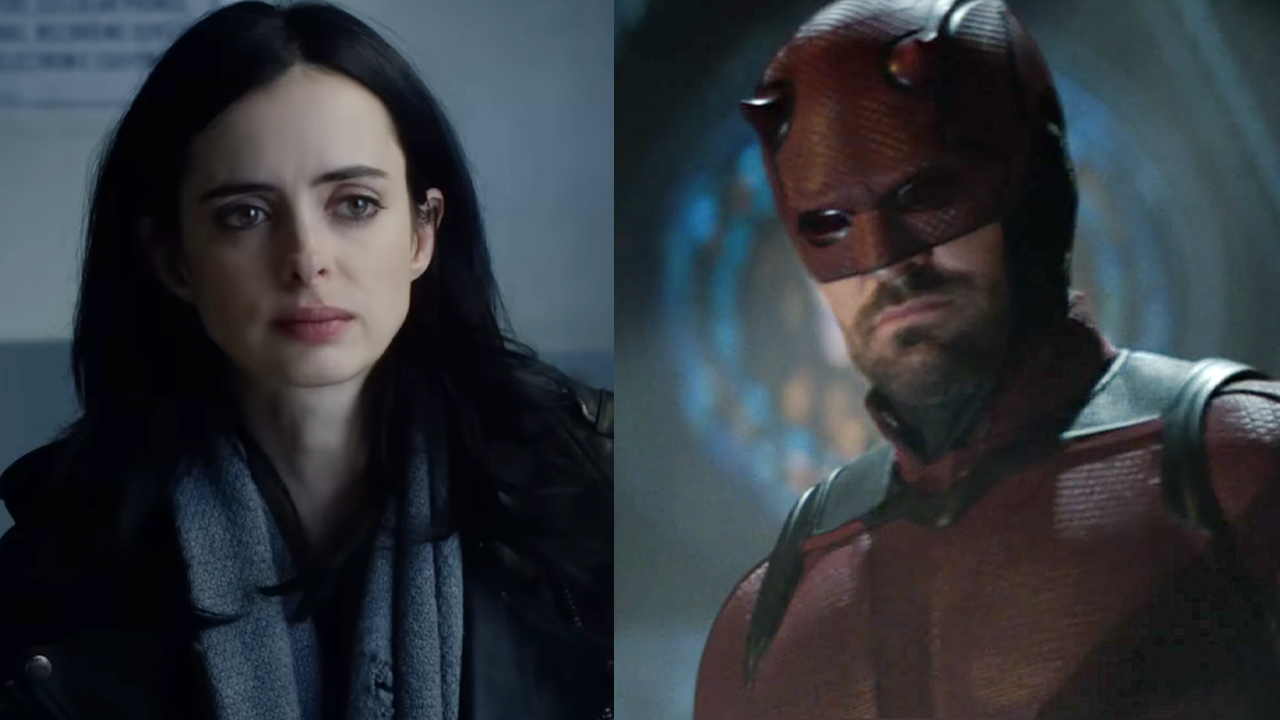In The Heart Of The Sea: 21 Fascinating Facts We Learned On The Set Of Ron Howard's Latest
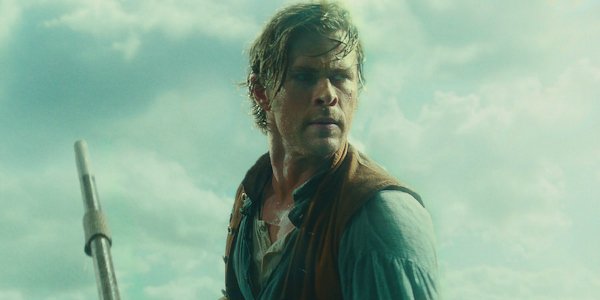
It's like stepping back into time. One minute, you're bundling up in your hi-tech weather gear to brave the chilly, wet elements of London. The next, you're in the middle of 1818 Nantucket, surrounded by hundreds (350 to be exact) of men, women, and children in period garbs, who mill about the bank, the pub, The Friends Society meeting hall, the blacksmith's, or the harbor master's office. All of these sturdy wooden buildings have paint weathered by years of salty sea spray. Tables of salted cod, crabs muscles and clams line the shore. But the main attraction is a far off dock, where a boat rocks gently and a weathered but still strapping superhero (Chris Hemsworth) emerges to embrace a trembling young woman and a baby with big blonde curls.
I am standing outside Leavesden studios on the set of Ron Howard's In the Heart of the Sea, a whaling drama based on the incredible true story that inspired Herman Melville's Moby Dick. The dock before me sits beside the biggest set tank in England, which measures 250x250 feet, holding the aforementioned ship as well as hidden hydraulic arm that rocks the boat as needed. I can see the edge of the set clearly as it's marked by a giant greenscreen wall. But as soon as they let us aboard that ship, my mind crackles with the fantasy that I am the captain of a real ship, ready to set sail to the high seas where danger lurks and fortunes are made and lost.
The crew of the Essex lost more than fortune. They risked their lives when the whaling ship Essex was attacked by a massive and mighty whale. Their ship went down in the middle of the Pacific, pushing the crew into three separate small boats, where they'd spend months, scraping by for sustenance before turning to cannibalism. The film's Essex crew includes Benjamin Walker as Captain George Pollard, Thor's Chris Hemsworth as first mate Owen Chase, and young Tom Holland as cabin boy Thomas Nickerson, who later wrote of his experiences, and inspired Melville. We spoke with these stars as well as key members of the crew, and learned a lot about whaling, but more importantly about the December release that's poised to hit theaters with the force of a ship-shattering whale.
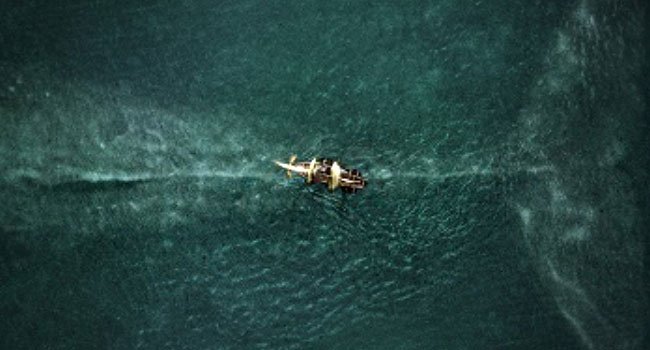
Ben Walker has choice words for actors who don't read the source material. Abraham Lincoln: Vampire Hunter star plays a Quaker captain who is stern, and arguably over cautious. But neither of these traits can be applied to Walker, who--despite being gaunt for his role--was quite chipper and charming despite the biting cold air. Asked if he'd read the non-fiction book by Nathaniel Philbrick on which the film is based, he laughed, "Of course I’ve read the book! What actor shows up on set and hasn’t read the book? I guess some do. And those people are assholes."
It's taken 12 years to go from script to screen. Producer Paula Weinstein confessed she first read Philbrick's book in its galley stage. "We actually got a very, very good first draft and went to the studio," she told us, "They were terribly excited about it, but the costs and the way you make a movie were quite different 12 years ago. So it’s taken this long to come together …We have the most fantastic director and cast, and I can’t imagine having made it any other way."
This set took 12 weeks to build. That's a long time for set construction, but looking around, it's totally warranted. Aside from the greenscreen wall, this place, thick with extras, smelling of salty sea air and fish, caked in mud, and embedded with textures and details, feels more real than any set I've had the good fortune to trod on. We're allowed to poke around, and I notice faces peering out the windows of the second stories of buildings. Men in costume re-shingling a small hut's roof. Women milling about in small velvet shoes that cannot keep out the wet and cold the way my big thick rubber boots are. The past is alive here, but I'll keep my feet in the present. Thanks.
The fake crew had to learn real sea skills. The cast was taught to tie knots, along with the lingo of seafaring so they could better respond in character. Mast climbing was also part of their pre-shoot training, and this was a skill at which The Avengers star Chris Hemsworth excelled. He also impressed when asked to row the whale boats that look like heavy, 20-foot long row-boats.
Your Daily Blend of Entertainment News
Don't ask Walker who he'd like to eat. As press on a set visit, you have the rare opportunity to be among the first to question the stars about their latest (in the works) project. But Walker warned us some questions were off limits. "'Which boy would you eat first?'" Walker laughed, "Just for future reference, that’s a lame question guys . It’s a very serious movie!"
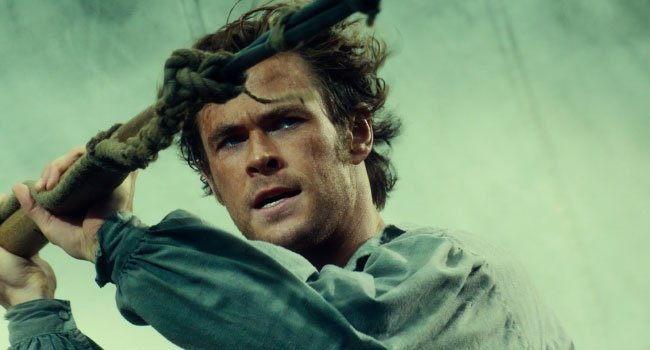
Ron Howard is digging shooting digital. The director took a generous time out from shooting a crucial finale moment to talk to us, repeatedly ignoring his A.D.'s insistence so he could answer one more question. His passion for the project was evident by the broad smile on his face as he explained, "This is actually only my second film to shoot digitally.* We’ve been editing digitally for fifteen years. To me, it’s liberating. I’m getting closer to what I had in my mind, quicker. I also find that experimentation is a little less daunting a decision to allow. I think it facilitates people taking even more risks. And that’s something that I’m really enjoying." (*The first was Rush, his first collaboration with groundbreaking digital D.P. Anthony Dod Mantle.)
Some of the film's crucial moments were shot on hidden cameras. In the Heart of the Sea's Academy Award-winning director of photography, Anthony Dod Mantle (Slumdog Millionaire), rigged the main ship the Essex with the hidden cameras, to allow him to capture 360 degrees of on-ship action. This meant actors had to be "on" as soon as they were on board, because they could be recorded in any moment.
"No whales were harmed in the making of this film," unit publicist Kathryn Donovan told the lot of us. While the imagery of whaling in the book is shocking in its violence, it will be considerably tamer in the movie. No stories-high sprays of whale blood. For scenes depicting the reality of whaling's arduous and bloody work, a prosthetic whale was constructed as a realistic set piece. We stood near parts of it and marveled at its oddness and accuracy. Some bits of the film might use the sea footage shot by Howard Hull for research. The rest--as you may well have guess from the trailers--is CG.
The CG whale is "a bit like Clint Eastwood, he’s a sociopath," VFX supervisor Jody Johnson tells us, "But he needs to remain the right side of real." Johnson explains that a lot of research has gone into recreating how whales actually move. But this their "Moby" also has personality. "We don’t want him to be a monster," Johnson offered, "He’s a creature, you know, he’s a real animal, and we need to keep him that way."
A taste of Moby's mayhem opens the film. Inside the studios sits a deep tank, where actors in period clothes thrash about underwater. This, Jody Johnson tells us, is "a sort of mood piece, very abstract," that shows Moby's first assault, this one on a bunch of doomed Spanish soldiers. The inspiration for this tantalizing tease of undersea violence is Jaws.
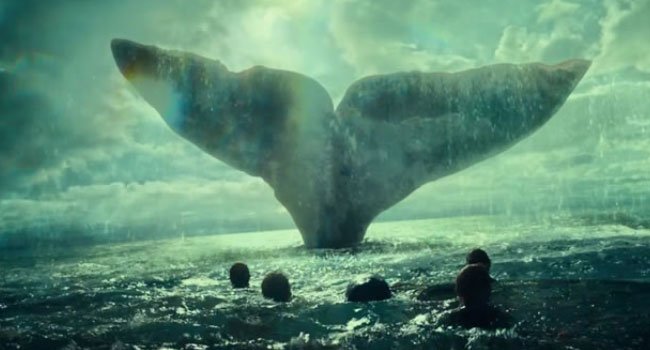
Holland and Gleeson collaborated on creating Nickerson. The Impossible's Tom Holland (the soon-to-be Spider-Man) plays Thomas Nickerson when he was a cabin boy who's first time at sea was on the doomed Essex. Brendan Gleeson, who won critical acclaim in 2014 for his captivating portrayal as a doomed priest in Calvary, will portray the aged Nickerson, who (in the film) meets with Moby Dick author Herman Melville (Ben Whishaw) in 1850. Gleeson was already wrapped, but Holland in tattered clothes smudged with dirt, shared with us how the two decided on how to portray Nickerson, explaining "We did one or two sessions to kind of create a similarity in our accents, and Ron (Howard) sent me some videos of him and Ben (Whishaw) working together so I could try and pick up some of his characteristics and all that kind of stuff. So I spent about a week and a half trying to become a young Brendan Gleeson, which was good fun actually."
The casts's crash diet is not recommended. This day of shooting has the cast at a point post rescue, so they're not at their worst as far as emaciated looks will get. Holland told us that diet will gear up as production moves to location shoots in the Canary Islands for five weeks. For now, he told us, "No carbs and I think we’re on like 1000 calories a day, slowly working it to 500 calories a day. So we’re all losing weight pretty quick." Leading man Chris Hemsworth admitted he'd dropped from 215 lbs. to 185 already. Holland recounted how dramatically the diet has already transformed Hemsworth, saying, "It’s funny, Chris at the beginning of the film was so huge. When we met him in rehearsals he had come off of [Michael Mann’s Blackhat] and he was massive. And then he went off to L.A. to do press and stuff and came back and was so skinny I had no idea, literally none of us knew who he was. He was unrecognizable. Today he was shivering and I was like, ‘Why are you so cold?’ and he’s like, ‘Cause I’m so skinny!’"
Even skinny, the extras were distracted by the mighty presence of Thor. Days before this visit, my peers and I had seen In the Heart of the Sea star Chris Hemsworth in all his godly glory as Thor in Thor: The Dark World. But the star before us was now playing a man who was starved to brink of death, complete with scrawny form, protruding collar bone, and deflated cheeks. But those piercing eyes and strong jaw? This was still undoubtedly Thor. Holland told us how the background actors were handling being starstruck: "It’s funny, today we’ve got like 300 extras on, and in our starting positions in the scene we’ve got like 12 kids, and they’re all like 7 or 8 and poor Chris, today it was all ‘Mister Chris! Mister Chris! How heavy is your hammer?’"
But for real, Chris, how heavy is your hammer?
Hemsworth takes the hardships of slimming down as part of the job. In costume and make-up for Chase's big return scene, Hemsworth is scrawny, his face flushed red with sunburn, his hair dreaded with salt. Hemsworth told us that this and Rush demanded him to scale down dramatically from superhero Thor peak. "Each time you put the muscle back on, your body has that muscle memory and wants to hang on to it, so you just have be well underfed and over-trained to get it off and it’s exhausting," he explained. "Every film has challenges and all of us are doing it together, all the cast is doing it together so you keep each other motivated I guess and keep each other in check. And we all knew that that was what we had to do and what was required from the beginning. I can’t say I was looking forward to it necessarily, but it’s all good."
Hunger helped him go method is angry moments. Hemsworth mused, "If I need to be agitated or angry or frustrated or depressed or moody, yeah, sure. [Laughs] Definitely. It’s tricky when you have to do the opposite of emotions, you know? But I think it does, especially this stuff, coming back after we return and when we are lost at sea at the worst of it. Yeah, you don’t have to convince yourself that you’re exhausted and hungry; you feel it. So yeah, I think you definitely use it."
Walker and Hemsworth made up songs to keep the mood light. Asked what it was like working with the Sexiest Man Alive who plays his onscreen antagonist, Walker smiled. "Oh he’s dreamy, isn’t he?" He asked before sharing, "Chris and I are working on doing the musical version of the movie. Every character has a theme. You know, Chase’s theme which is in direct contrast to Pollard’s theme, and then you’ve got the children on the boat. It’s fascinating. Look for it in 2015." He didn't dare share a sample lyric, slyly saying, "They’re too dirty I think for even print."
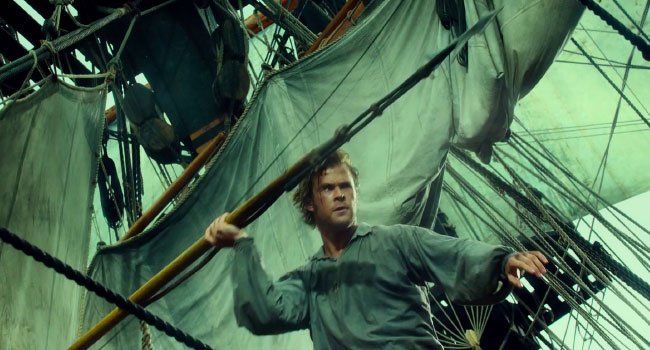
Hemsworth compares Into The Heart Of The Sea to Rush, not just in the slimming down requirements. In this whaling epic, his character Chase is a dramatic foil to his captain George Pollard, Jr. (Ben Walker). "I think (Ben and I) both had the same idea about having these guys be in conflict, but underneath, there’s an amount of respect," Hemsworth offered, "And that’s always an interesting rivalry. It’s the same with the Niki Lauda, James Hunt story that me and Ron talk about often being one of the most successful things or one of the most exciting things about that relationship was the fact that you don’t have that kind of competitiveness towards someone unless there’s an amount of respect to it. Respect comes with that. "
Howard seconds this comparison. "In odd ways, Rush and In the Heart of the Sea are related in the way that I was attracted to the story," Howard explained. "Two different worlds, obviously, two different kinds of characters, but both movies, in my mind, offer similar things.
"They have the possibility of transporting audiences in a very cinematic, modern, compelling way that’s fresh, and invites people to see it on the big screen. Two, the stories feature different entertainment values. There are action elements, there are thematic values, there are performance opportunities, and in this case of course a big cinematic challenge. It’s not Formula One, it’s a white whale. But in both instances, what’s different is the way in which the movie connected with me in terms of mind and heart.
"What I relate to in the story, what I’m fascinated to, that emotional length that I have to each of these stories is different. With Rush, it was that question of how far will you push yourself in any field of endeavor if you’re really trying to excel, and which kind of personality do you want to be. And in this one, it’s much much more about coping, testing yourself, how individuals cope with those tests, and much more about transformation. James Hunt and Niki Lauda didn’t change. They were who they were, like them or not, and that was the integrity. And the moral of the story in a way was, some people have the guts to be who they are and never back away from that.
"This is much more a story of emotional transformation which I think is one of the things that Melville picked up on the Essex story, aside from the whale, was the way in which the real men were tested. His book’s a novel and doesn’t deal with the characters of the Essex. But in the rewrite where he added Ahab — that came after he looked more deeply at the Essex story. It’s those sort of questions about man and nature, and those sort of big ideas about where you stand as an individual in regard to those kinds of questions and who are you on some elemental level. You can’t really know until you’re put to this kind of test."
The most dramatic scenes at sea will take place on the sea. Howard and others teased the days ahead, which would include location shooting in the Canary Islands. "I’m kind of glad that the most emotionally significant and challenging scenes with the actors are not going to be done in a tank, they’re going to be done in the ocean," Howard said. "I think that’s going to benefit the intensity and the authenticity and the depth of the movie."
The Canary Islands shoot will be "hell," or so says Captain Henry Pollard (a warm and charismatic Ben Walker). Full-scale replicas of the Essex and the Phoenix (a ship that rescued some of the crew) await the cast and crew in the Canary Islands. So does the toughest part of their diet. The England leg of the shoot wraps in four days, and Walker predicts, "The next five weeks are gonna be, what’s the word? Hell. I mean it’s kind of lame to complain about it considering there are actually people starving around the world; we just have to eat quinoa every once in a while. Also these guys, the fact that they actually did it, it’s kind of the least we could do to tell their story." He shrugged, referring to this diet downer as "uptown problems."
No one would share their Nantucket accent. In the book In The Heart of the Sea, much is made about the specifics of the Nantucket accent circa the early 1800s. Oil was pronounced "ile," sharp was "shurp," chest was "chist." But not a single actor on set would dare give us a preview, though we're told the accents would be a part of the film. Chris Hemsworth's big scene was shot out of ear-range of us huddled journos. Tom Holland laughed off our request, but Benjamin Walker was the most direct: "No, come see the movie." Deal!
In the Heart of the Sea opens on December 11.
Staff writer at CinemaBlend.

